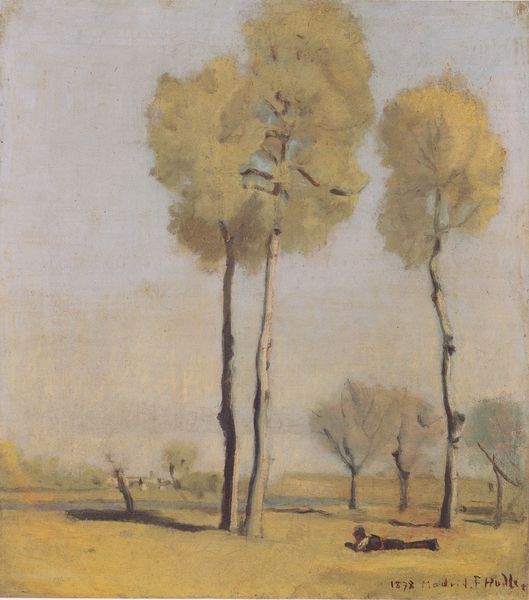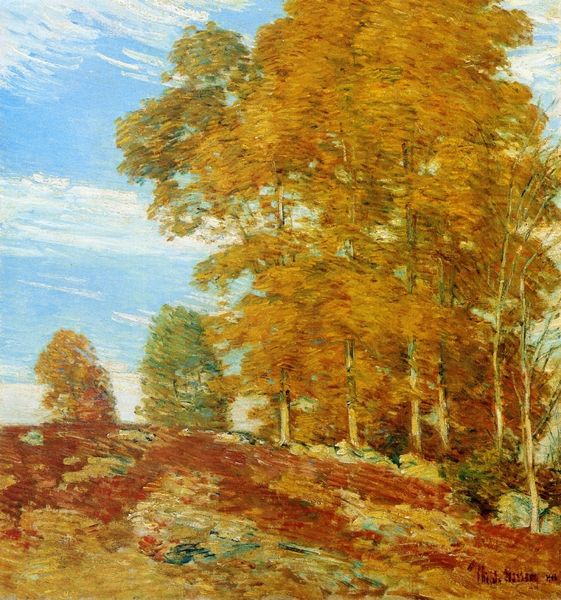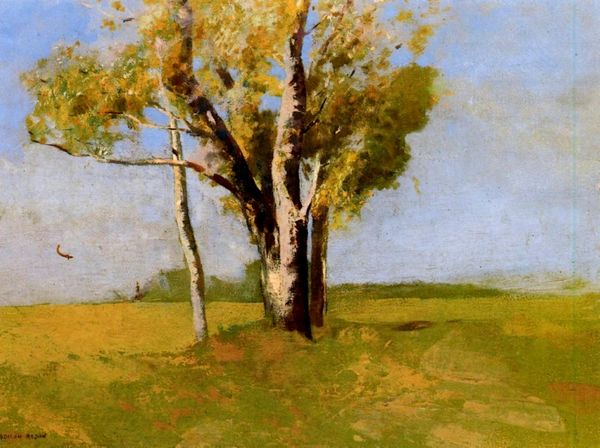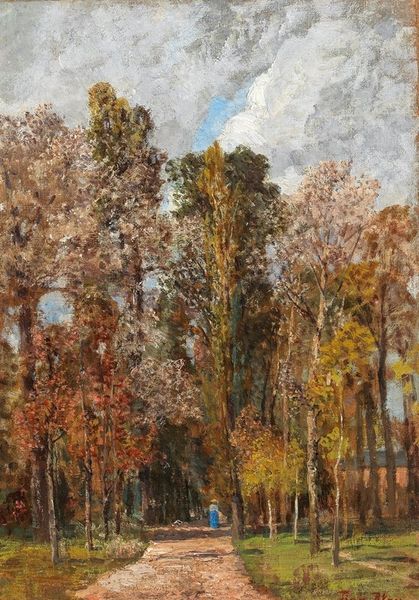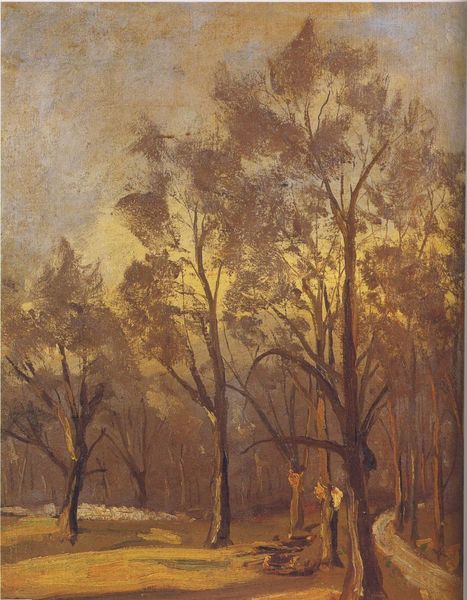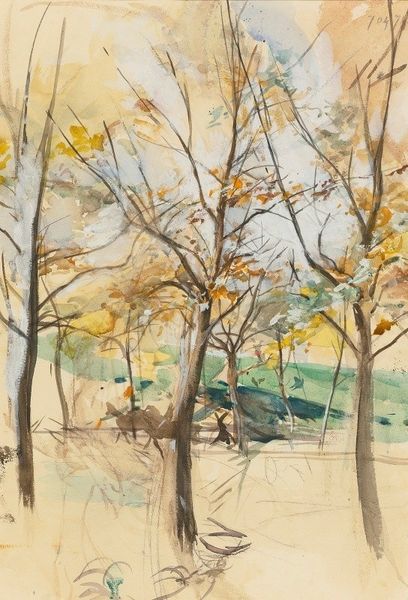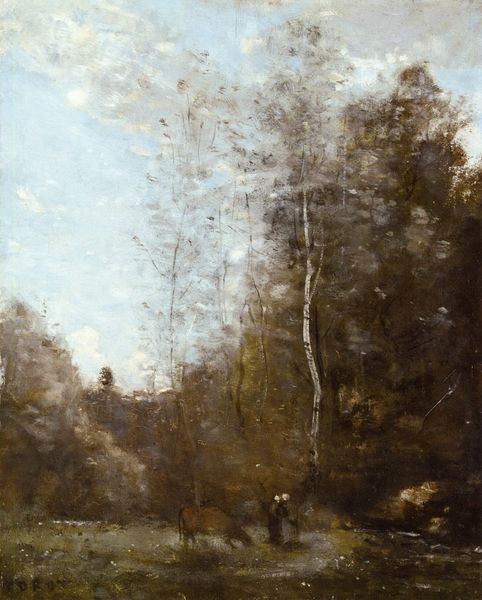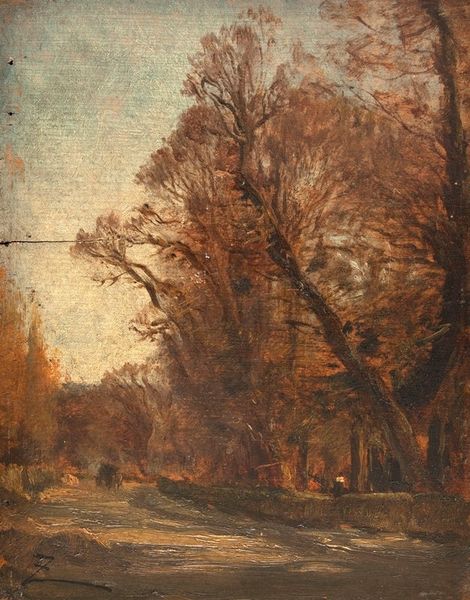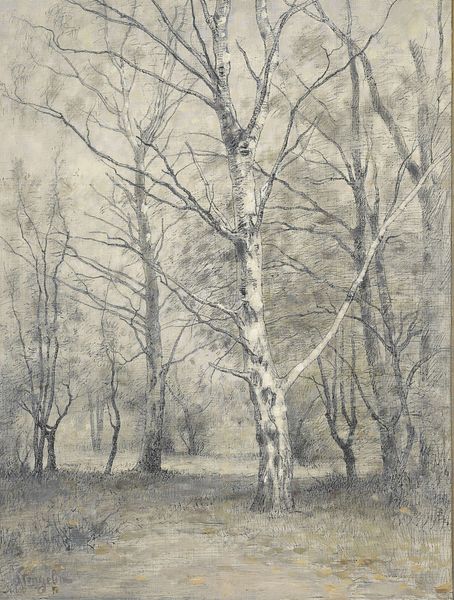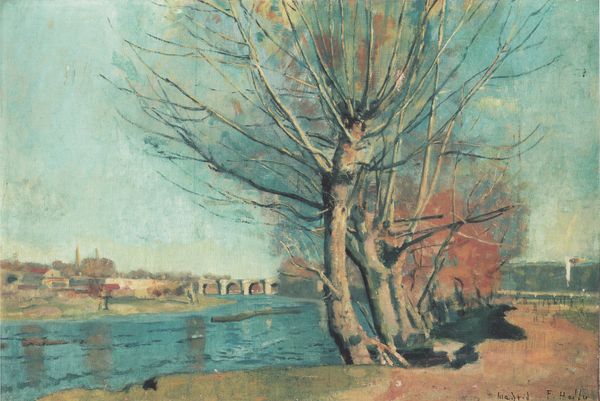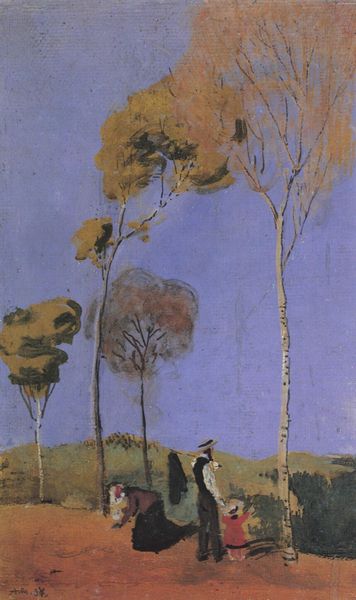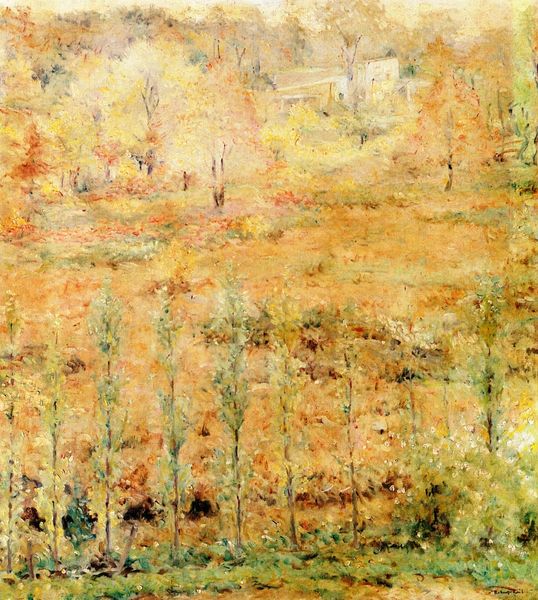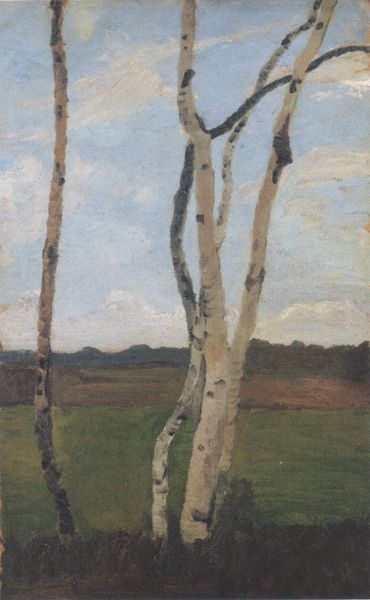
plein-air, oil-paint
#
plein-air
#
oil-paint
#
landscape
#
impressionist landscape
#
oil painting
#
geometric
#
cityscape
#
post-impressionism
#
modernism
#
realism
Dimensions: 85 x 105 cm
Copyright: Public domain
Editor: We’re looking at Ferdinand Hodler’s "Tree on the Lake of Brienz near Bödeli," painted in 1906 with oil on canvas. The verticality of the slender trees reaching for the sky strikes me—they almost seem to strain upward. What do you see in this piece? Curator: Hodler's trees certainly demand our attention, don't they? But it’s how they're positioned within the broader sociopolitical landscape of early 20th century Europe that truly captivates me. Consider the rise of industrialization and its impact on nature. Hodler, positioned in neutral Switzerland, highlights a seemingly untouched landscape. Yet, is it untouched, or is this a deliberate act of resistance against the rapid transformations reshaping the world? Editor: Resistance? How so? Curator: By meticulously capturing the serene, almost spiritual, essence of the Swiss landscape, Hodler subtly critiques the pervasive alienation from nature fueled by modernity. His art becomes a space for reclaiming and reaffirming the importance of our relationship with the environment, especially when it's continually exploited by capitalism and colonialism elsewhere. Notice the starkness in his trees—it is also important to remember the symbolism of the single tree, the artist himself? What do you make of that reading? Editor: That reframes the piece completely. I had only considered it aesthetically before. Now I'm seeing the political and the personal intertwined. Curator: Precisely. By engaging with the cultural moment, the artwork stops being merely representational and starts participating in dialogues about identity, place, and resistance. It really underlines art’s capability of mirroring back society’s problems to provoke positive change. Editor: Thanks, that makes Hodler’s landscape seem less like a simple picture and more like a statement. Curator: Absolutely, and remembering those statements within historical and contemporary context makes for powerful readings.
Comments
No comments
Be the first to comment and join the conversation on the ultimate creative platform.
